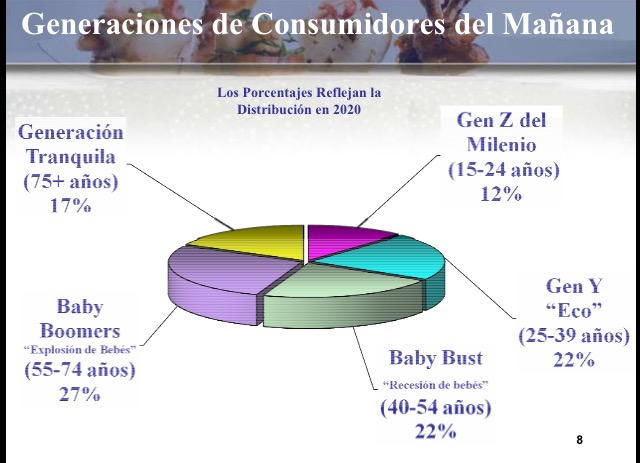
Market segmentation
To perform market segmentation analyzed:
- The personal and anthropometric data
- The practice of physical activity and diet
- The consumption of nutritional supplements
- Consumption of dietary supplements
The main factors associated with consumption of nutritional suplemetos are related to health-related reasons: consumers looking for a healthier lifestyle, increasingly informed and aware of the close relationship health-food and more knowledgeable about nutrition.
There are even studies showing that those who have a more positive attitude towards such foods are those consumers who have experienced illness or whose family members have experienced or nearby.
In this connection, it is important to take account of the importance of public health issues in this market, and that somehow will influence consumer behavior towards these foods.
This table shows the age, height, weight, years dedicated to physical activity in the gym, days a week and attending daily time spent
This table shows sex, occupation and educational level of the sample.
Motivations
48% of respondents go to the gym first to be fit.
Exercise is the second most selected reason (19%).
Health with 11.1% is the third most chosen option.
If you look by gender, selected the three reasons are
- Be in shape
- For exercise and because you feel better in men
- To be fit for their health and exercise in women.
30.1% was some kind of diet, understanding this, any nutritional and dietary control with a grounded structure, 53 of these were men and 72 women.
The low fat diet is the most common with a total of 85 respondents.
We will also take into account the segmentation by reason of consumption of nutritional supplements
- Friends 61.6%
- Dietitians 29.4%
- Monitors 16.7%
He also picked up the place where they perform the purchase of nutritional supplements
- The gym 42.5%
- Specialty stores 35.62%
- The herbalists 33.47%
Segmentation in the Canadian Market
In terms of gender and age, we can identify two important segments among consumers in functional foods:
Women and Children
Producers focus on women, since they are usually more involved in health issues and have more influence on purchasing decisions at home
There is a major concern of parents for feeding babies and children, because there is greater awareness about diseases such as childhood obesity. In response to this has greatly increased the demand for healthy snack foods and additional nutritional benefits, such as Omega 3 (development of the brain and eyes) and fiber (improvement in the digestive system and heart health)
Pregnant women represent an attractive niche, as more and more functional or organic food consumed to ensure a good pregnancy.
Over 55 years
The Canadian population is aging. Today 24.5% of the population is over 55 years and is expected to increase further. This segment has become one of the most interesting trends related to health and wellness.
This segment has a much higher pay for food choices that deliver additional health benefits available.
Within this group, the number of Baby Boomers in Canada (65 +) will grow from 4.8 million (2010) to 6.5 million (2020). This group has an even greater interest in maintaining a healthy lifestyle.
Future segmentation by age in Canada

Motivations of consumer purchasing
The main motivations of consumer purchasing products are nutritional and dietary supplements
Increase muscle mass
massa muscular tone
Reduce fat and fluids
reduce weight
Reshape the physical appearance
welfare
health
medical reasons
aesthetics
sports Performance
nutritional deficiency
These variables can be present in all segments of consumers
The act of purchase
Purchases are usually planned well by the consumer himself or by any professional within a plan, mostly linked to sport
Here the variables are determined by the segment.
In the case of heavy users are buying 89% planned the user high light user only 60% to 35%, and 40% emotional or influenced
In the lap users we find the guidelines